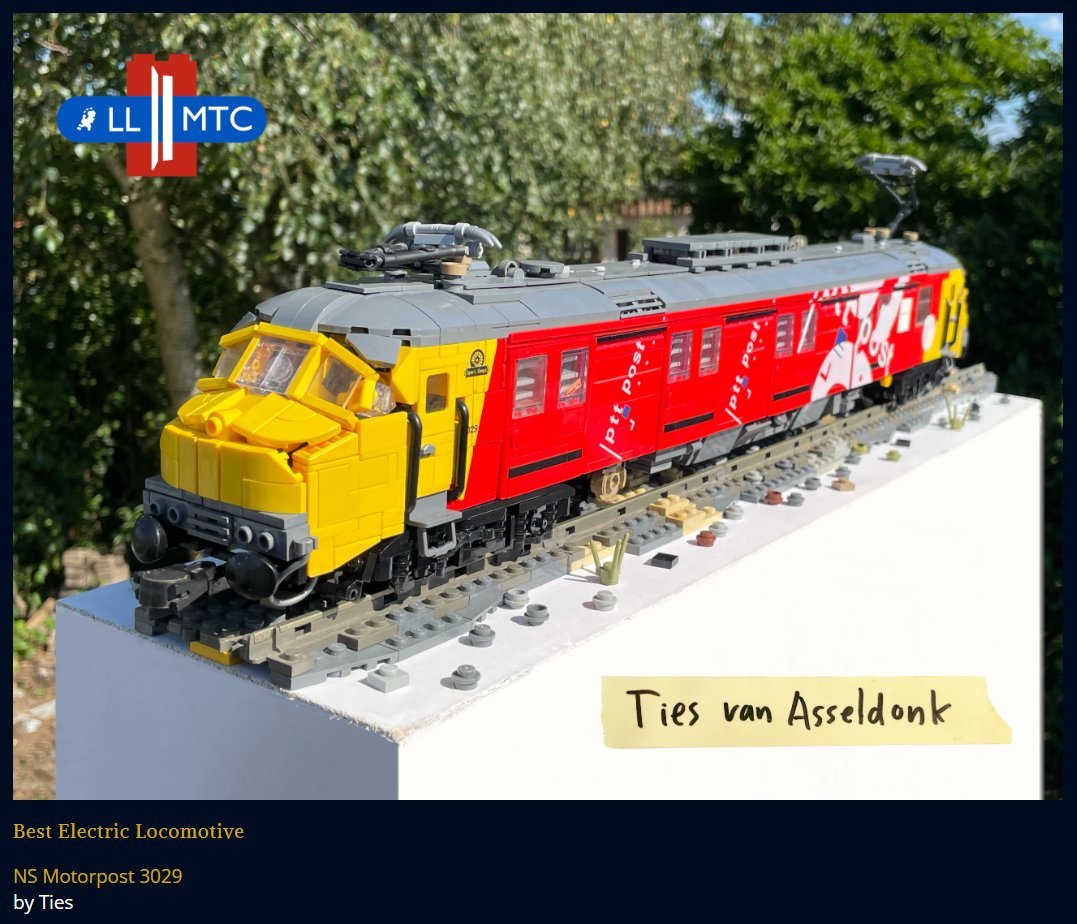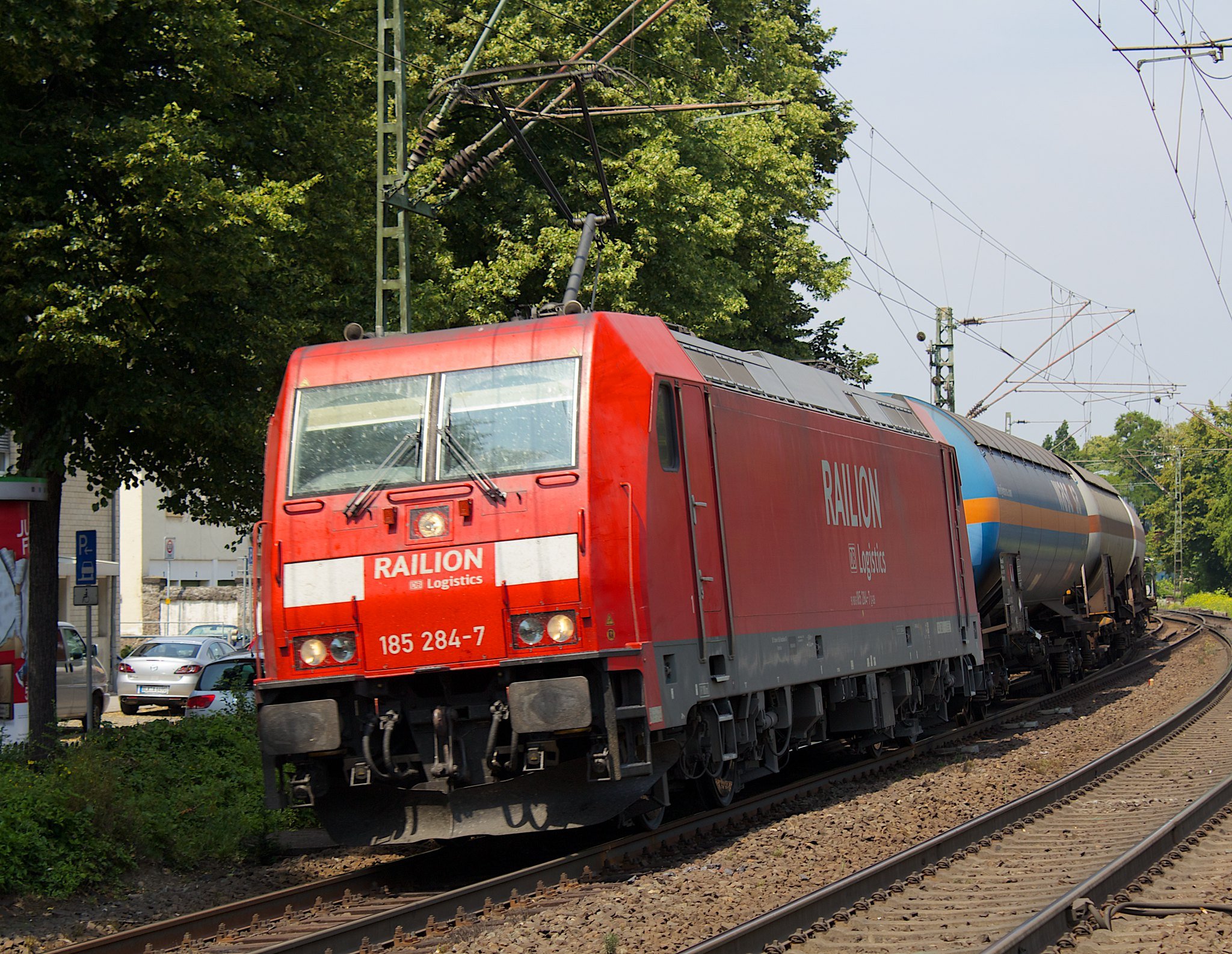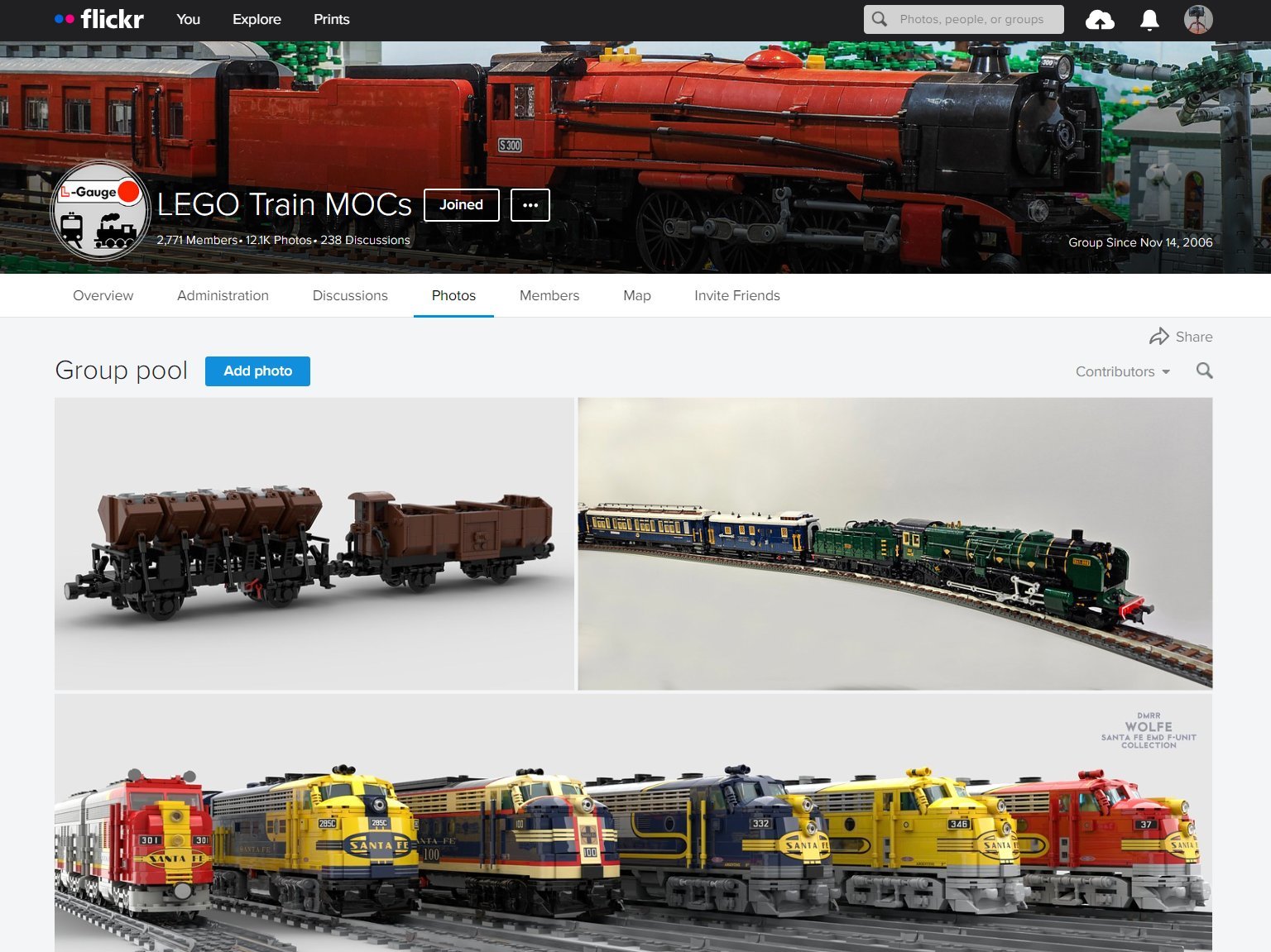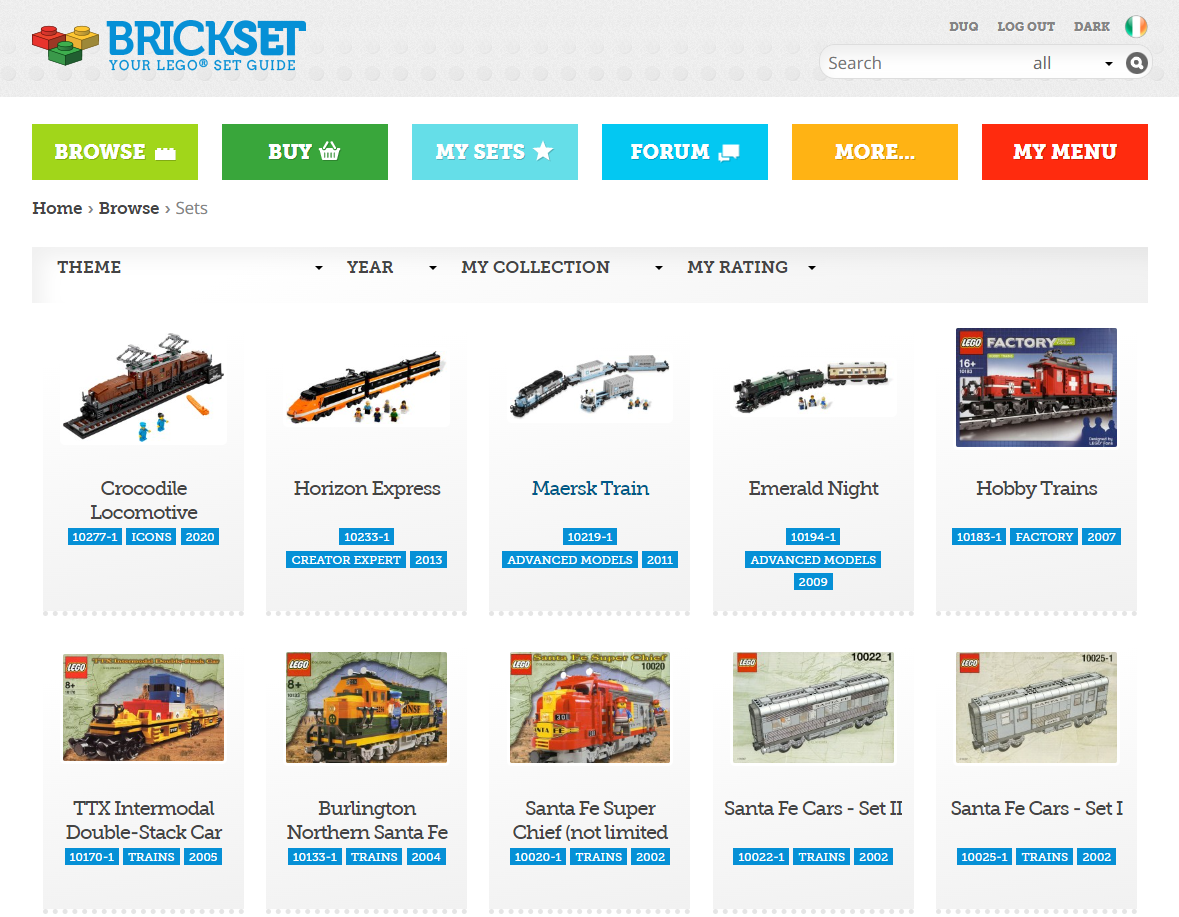To Protect and Share: The Story of Open L-Gauge
/Earlier this year, a new website joined the AFOL eco-system: Open L-Gauge. It is aimed at a very specific target audience of LEGO train builders but could have impact far beyond the train community.
Open L-Gauge logo
Instead of describing the site for you, I’ll let the site speak for itself: “The goal of Open L-Gauge is to make high-quality LEGO train models available to everyone in the community, but we do want to set some rules for how these models can be used. The goal of the site is to encourage the sharing and remixing of ideas with other LEGO train fans and simultaneously protect the original designers against commercial parties reselling their designs without permission.”
I wanted to find out the story behind the site so at a recent LEGO train event in the Netherlands, I met up with two of the driving forces behind the creation of Open L-Gauge. Let me introduce the two gentlemen, Ties and Raimund.
Ties
Ties is a freelance web developer and lifelong LEGO fan who lives in the Netherlands. He is an active member of LLMTC, the LowLands L-Gauge Model Train Club. In the Brick Train Awards, he has won Best Electric Locomotive for Europe/Asia, and his Logging Railway is a BrickLink Designer Program finalist. Despite his fame in the LEGO train community, he is a quiet person—dare I say an old head on young shoulders.
Dutch Railways ‘Motorpost’ by Ties - Image from Brick Train Awards
Raimund
Raimund is a German builder who goes by the nickname BigDaedy. He lives near Frankfurt where his day job is driving full-size freight trains. It’s not surprising then that after building military models for years, he eventually turned to trains. He actually built a model of his “office,” the TRAXX, a popular European electric locomotive. It was designed together with Dutch builder Gerbrand “Raised,” and their collaboration has been featured in Brick Model Railroader.
Traxx F140 / Class 185 - Photo by Lars Steffens, shared under CC BY-SA 2.0
TRAXX F140 - Model and render by Raimund ‘BigDaedy’, Freight cars by Nicolas Tbx
Sharing MOC Instructions
The two guys have a lot in common. Both are passionate about their hobby. More than that, both also care a lot about the community. When I asked what had led to the creation of Open L-Gauge, both told me they’d had the idea for a long time. There already were various sites where you could share or sell LEGO instructions like Flickr, Rebrickable and the BrickLink Studio Gallery, to name a few.
But none of those options met all the requirements they were looking for though for one big reason. As Ties said, “The existing community sites lack a proper licensing model, and each of them has its own set of restrictions like no linking to external sites or fixed pricing.” As a result, the idea of setting up a site where people could share MOC instructions that would also address those issues of other sites started to grow in the back of his mind.
MOCs shared in the Flickr “LEGO Train MOCs” group
Raimund added: “I had noticed various talented builders have become more hesitant to publish their designs on sites like Flickr for fear of having their ideas stolen.” This is what led him to start thinking about building a safe, dedicated platform for train instructions. But as both agreed, they prefer to spend their time building trains rather than websites, so for a while, the plans for a site remained just that—plans.
Then a few years ago, there were problems with a certain Chinese manufacturer of LEGO-compatible bricks. The company not only copied official LEGO sets, but they also started copying MOC designs from the community—and made a profit. Recently there have been similar issues with a company that sells train instructions, some of them “heavily inspired” by MOC designs. One of the affected builders was Raimund. In his own words: “It really stings to see other people profit from your work.”
Building Better Trains
LEGO Train Clubs (LTCs) are often small, and there aren’t many of them. They tend to not have an easy-to-find “shop front” for want of a better word. That means people who want to get into LEGO trains as a hobby can have a hard time finding and joining a club where they can learn from other members to build better, more detailed LEGO train models.
With the recent trend of communities moving to harder-to-find places like Discord, finding a LEGO Train Club is only becoming more difficult. LEGO’s own train offerings are limited. While there’s a constant stream of buildings, cars and planes aimed at adults, there have been only a few train sets for adults that go beyond LEGO City.
LEGO’s offerings for adult train fans since 2002, listed on Brickset
That means there’s a gap in the market that is being filled by these easy to find commercial sites, selling instructions for train models that are a step up from official sets. Ties said: “Maybe we are to blame to some degree. It’s not easy to approach us [train builders] with train events that are sometimes closed to the public.”
A New Generation
There are also issues that affect the general LEGO hobby, not just train builders. While it was kind of funny to hear two guys the age of my children talk about the new generation of builders and content creators, they made valid points. There are a few trends that make it harder these days to get started with LEGO trains.
The internet is becoming ever more commercial. The older generation of AFOLs grew up with sites like LUGNET, Brickshelf and MOCPages. The spirit of the community was sharing ideas and improving everyone’s skills and enjoyment of the hobby. The current generation is growing up with TikTok, YouTube and Instagram. The focus seems like it has moved more to performance-based clicks and likes—and with that, there seems to be less respect for copyright. (When was the last time you saw a YouTuber cite their sources?)
Open L-Gauge hopes to help bring back some of that community spirit. As Ties said: “I don't want to be on a pedestal. I want people’s skills to improve.” Raimund agreed: “It’s great to see people take inspiration from your models and designs.”
Open L-Gauge
With all those thoughts about improving people’s train-building skills and safer sharing of designs brewing for a while, it was Raimund’s copying incident that kicked the two guys into action.
It was time to build the platform they had been thinking about so train builders would have a safe place to publish their designs while, at the same time, making it illegal for unscrupulous commercial parties to “take inspiration” from those designs. In a surprisingly short time, they had the bones of a platform on the rails [yes, pun intended ;-) ]. They shared the early version with fellow train builders on the ELTC (European LEGO Train Club) Discord, and once they knew they were on the right track [again, sorry] they opened it up to the public.
So, how is Open L-Gauge different from other platforms? The most important feature of the site is the Creative Commons Attribute Non-Commercial Share Alike 4.0 license, or CC-BY-NC-SA to friends. In short, this means that you can share and use the design, but you must credit the author, and you can’t use it for commercial purposes. While Creative Commons does not provide legal aid, the license is recognised in court should it come to that.
The payment options are certainly different. There is no set price. In fact, there is no price—you can even download the instructions for free. It is, however, possible to make a donation to the author. That makes the threshold low for people new to the hobby but makes it easy to show appreciation for the work that’s gone into making those instructions.
The Future
Ties and Raimund’s efforts have already been recognised. At the recent Brick Train Awards, there was a new category: Best Community Project. It is “an award that recognises a project in the LEGO train fandom which benefits the community.” Open L-Gauge was the first winner of the award. The selection of instructions on the site is growing, and the first voluntary payments have been received.
Let’s hope the site will keep growing and help protect the designs of builders while encouraging sharing with the community. And who knows, maybe the format will be followed in other corners of the AFOL world.
What do you think of copyrighting your LEGO MOCs? Leave your thoughts in the comments below.
Do you want to help BrickNerd continue publishing articles like this one? Become a top patron like Charlie Stephens, Marc & Liz Puleo, Paige Mueller, Rob Klingberg from Brickstuff, John & Joshua Hanlon from Beyond the Brick, Megan Lum, Andy Price, Lukas Kurth from StoneWars, Wayne Tyler, Monica Innis, Dan Church, and Roxanne Baxter to show your support, get early access, exclusive swag and more.

























